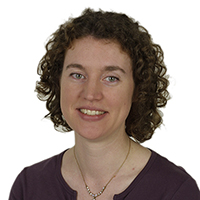Welcome to the 32nd issue of Science in School Editorial article

This financial commitment represents an even more important commitment from EIROforum: to the young people of Europe and to you, their teachers. EIROforum is a partnership of eight world-class scientific research organisations, and like all other research organisations, they need inspired, committed and knowledgeable scientists now and in the future. For that reason, Science in School makes perfect sense to EIROforum, as it invests in Europe’s teachers, in Europe’s young people and in the future of European science.
With this in mind, Laura, Isabelle and I are looking forward to bringing you many more inspiring teaching ideas, cutting-edge science features, interviews with scientists and teachers, and much more over the next few years. So, if you haven’t already thought about submitting an article to Science in School and sharing your ideas with colleagues worldwide, perhaps now is the time to do it.
While we look forward to the future, we also have an archive full of useful articles that you can use right now. This year is the International Year of Light and Light-Based Technologies and we have made a collection of more than 40 light-related articles on the Science in School website, many of them translated into other European languages.
The collection includes teaching activities, science articles and profiles of scientists, and covers a broad range of interesting topics across the sciences, including space telescopes, fusion energy, art conservation and how fish survive in the Arctic. Over the course of this year, we will add even more articles and translate existing articles into other European languages, so do keep visiting our website.
Speaking of which, we continue to welcome feedback on our new website. If you’d like to share your views with us, send us an email at editor@scienceinschool.org
In the meantime, we hope that this issue sheds some light on new and interesting scientific topics. For example, did you know that some cancers are infectious? And do you know what exactly you’re doing when you dye your hair? We also answer the question of how mathematicians can help to predict the spread of Ebola (page 14). If you’d like something more hands-on, why not get your students to investigate the chemistry of magic sand or the physics of chocolate eggs? Experiments with blood can be dangerous, so you might like our chemical simulation. Or – a topic close to our hearts – you could help your students to write creatively about science.
We’d also like to take a special moment to celebrate other news as we go to press: the reawakening of the Philae lander on comet 67P. We heard the news through the tweets from Philae – or, more accurately, from the scientist tasked with tweeting for Philae, our former intern Karin. You can read her story.





